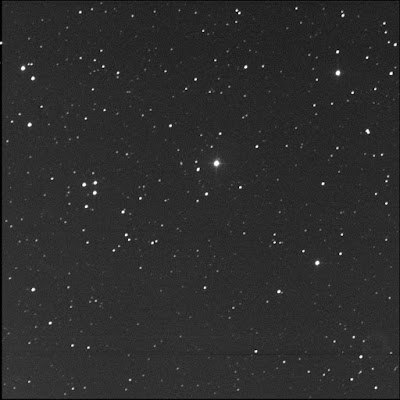Luminance only, 15 seconds subexposures, 10 stacked shots. FITS Liberator, Paint.NET. North is up; east is left.
The target object is south-south-east of the bright star (HD 32922, at mag 8.8). If I had to guess, compared to nearby stars, I put it at mag 14 now.
When I first heard about this (via a Facebook post, I believe), I imagined seeing an effect like the Einstein Cross. What's happening with this object is that a star's light is being amplified by gravitational lensing; it is not being split. I believe this star, also known as J050742.7+244756, normally shines at magnitude 14. It was reported as bright as mag 10 or 12 (in V and R filters) as recently as 4 Nov.
See the time-sensitive alert page provided by the American Association of Variable Star Observers. In the discover's image, it looks brighter than mag 12.
See the Followup Reports page provided by the Central Bureau for Astronomical Telegrams.
POU 552, in fact, is a triple, east of HD 32922. The B companion is very near the primary, south I think. The C attendant is north of A. They are all roughly the same intensity.
Well away to the south-east are a bunch of pairs but the only one identified in SkyTools 3 Pro is POU 555. B is fairly close, to the south-west, and slightly dimmer.



1 comment:
Don't forget to report your variable star estimate for TCP J05074264+2447555 to the AAVSO...
Post a Comment